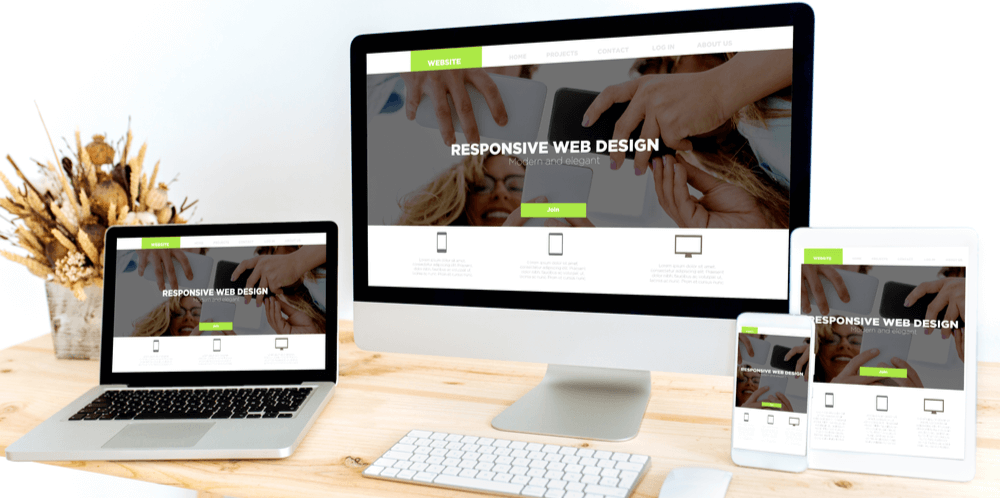These days, a company’s web presence can make or break them. To be seen and connect with customers, businesses of all sizes must have a strong website. Website designers in Portland work on numerous projects to ensure their clients put their best foot forward online. But there are also a lot of misconceptions about web design, and some of those myths can hurt your business and web presence. Here are several of the most popular myths about website design and the truths behind them
Myth: Desktop Design is the Most Important
It used to be that companies could create a great desktop version of their site and call it good. But the majority of Americans’ web browsing now takes place on their mobile devices, which means the mobile version of a site is actually more important than the desktop design. This is especially true for websites targeted at younger consumers, because millennials and Gen Z spend even more time on their phones. That doesn’t mean desktop should be totally forgotten, but a quality mobile experience can also be a huge boost for a company. When designing a website, it’s important to think mobile first.
 Myth: The Homepage is all That Matters
Myth: The Homepage is all That Matters
A lot of companies feel the need to put all of their resources into building an amazing homepage that includes all the information customers could ever need. The homepage is incredibly important and provides the first impression of a business. But in reality, the homepage is just one part of a great website. In many cases, best-designed sites cover multiple pages and don’t cram the homepage with everything people need to know. Customers will find the site through multiple pages and sources, so effort should be put into every page to create a consistently great design and experience.
Myth: Design is More Important Than Content
Many companies fall into the trap of creating a beautiful website without having the content to match. Design is crucial to capturing people’s attention, keeping them on the site, and providing a convenient and seamless experience. But people are coming to the website for information and content, not just to look at the design. Content should be clear and used to easily convey information and connect with customers. Not all content is created equally, so investing time and resources to create quality content customers actually want to read can pay off.
Myth: Your Website’s Appearance Is More Important Than Function
Sometimes companies fail to understand that function is as important as the aesthetics. Some may hold so tightly to a design they have been dreaming up without realizing that it may not be practical or functional when it comes to easy navigation for the end-users. Yes, in website design, the aesthetics are absolutely important, but so is the functionality. A beautiful website that is hard to navigate cannot provide a business with the results they need from their online presence.
Myth: Image Quality Does not Matter
Website designers often face a dilemma when the photos clients want to use are not high-quality. While many may believe the quality of their photos won’t greatly impact the design, that is unfortunately not true. Even if a website has an excellent layout and amazing written content, poor-quality images can ruin the aesthetics. High-resolution, professional-looking photos will provide you with a far more beautiful website outcome.
Myth: A Finished Website Doesn’t Need Updates
In the push to finish a website, some companies don’t feel the need to revisit it and make updates after it is done. They figure that once their information is online, that’s good enough to connect with customers. But the world of web design is constantly changing. What worked for a website even a year or even a few months ago could be completely outdated now. The last thing you want is for customers to think the site is no longer relevant. All companies and web designers should regularly evaluate their websites to ensure they are still meeting customers’ needs and effectively driving business. If you noticed web traffic has taken a dip, it could be time to update or revamp the site.
 Myth: User Feedback Should Guide All Decisions
Myth: User Feedback Should Guide All Decisions
While it’s important to always keep the customer in mind and create a website that is easy for them to navigate and that provides the resources they need, the end-users aren’t the web designers. Feedback should be considered, but it shouldn’t be the deciding factor in every aspect of website design. A great website design meets users’ needs while offering something new and innovative that they didn’t realize they needed until they saw it on the site. Feedback should be used as a guide but not the ultimate deciding factor in what goes into the site.
Myth: A Great Website Design Will Guarantee Visiter Traffic
As much as we all wish this was true, it’s unfortunately not the case. The internet is overflowing with content and simply putting out a beautiful website does not guarantee it will be found. In addition to design, a website needs SEO (Search Engine Optimization) that will help it to rank on search engines. Without good SEO, a website may remain buried beyond the first page of Google. It’s important to note that most people in their searches do not click on results beyond the first page.
Myth: The More Features You Have, the Better Your Design
Often, people want to cram as much as they can into their design. They believe that the more they have to offer on their website, the better it will be. However, that is not always the case. An overly complex site will make it more difficult to get a clear, memorable message across to users. Too many features can also make the website harder to navigate. A simpler website can often better deliver the message you are trying to convey. Users will also appreciate the ability to easily find what they are looking for in their visit.
Myth: Small Tweaks to the New Website Design Won’t Make a Difference
As website designers, it’s challenging for us to see people believe this. While we certainly understand that changes are always happening in a business, it’s hard to see fantastic designs slowly deteriorate as small changes begin to add up. Sometimes simply changing out images, uploading content that doesn’t align with your brand, or adding more text to various sections of a page can undo the original, beautiful design.
These web design myths debunked show the importance of great web design in creating a company’s brand and online presence. There are a lot of bad opinions and misinformation, so sorting through the noise with the help of professional website designers can help companies make their voices heard online in the right ways.
